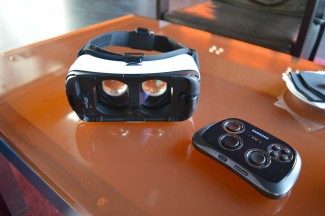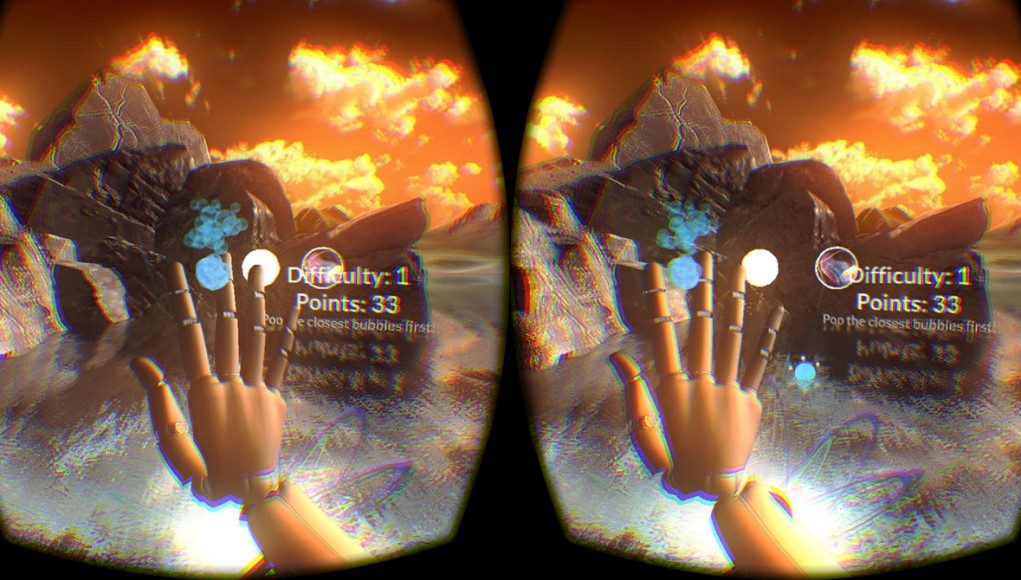 It’s not every day that someone gains an entirely new sense, but James Blaha did just that. He created a virtual reality vision therapy experience that essentially cured his lazy eye and enabled him to see in 3D for the first time in his life. When I first interviewed James in May 2014, he was hesitant to make any claims that this was an effective treatment beyond his own personal experience, but nearly two years later James’ Vivid Vision system has shown success in other people with amblyopia and strabismus and is now located in over 20 optometrist clinics around the country.
It’s not every day that someone gains an entirely new sense, but James Blaha did just that. He created a virtual reality vision therapy experience that essentially cured his lazy eye and enabled him to see in 3D for the first time in his life. When I first interviewed James in May 2014, he was hesitant to make any claims that this was an effective treatment beyond his own personal experience, but nearly two years later James’ Vivid Vision system has shown success in other people with amblyopia and strabismus and is now located in over 20 optometrist clinics around the country.
I had a chance to catch up with James at GDC last month to get an update on the current state of VR vision therapy, how to determine whether this VR treatment might be a good fit if you have lazy eye, and where he sees Vivid Vision going in the future.
LISTEN TO THE VOICES OF VR PODCAST
At the moment, it’s only possible to get access to the Vivid Vision system at a limited number of optometrist’s offices around the country, but they’re working towards a consumer version that would allow you to do the VR treatment sessions within the comfort of your own home while still having some oversight from an optometrist. Once they’re able to launch this, then it could mark the beginning of a telemedicine revolution where remote doctors could track patient’s treatment progress based upon the data collected within a VR experience.

In talking with Michael Aratow of VR rehabilitation startup VRecover, he made the claim that VR will enable more personalization of medical treatments. Rather than give generic exercises for people to do own their own without much feedback, VR therapy and VR telemedicine could provide more detailed quantitative data that would enable faster feedback loop iterations and adaptable treatments that could be more specific for each patient.
My original interview with James and his story of curing his lazy eye with VR made such an impression on me that I included it within my top 10 list of Voices of VR interviews I’ve done so far. James says that VR allows us to completely control the visual input to our perceptional system, and this is enabling us to completely rewire our brains. For people with lazy eye, this has allowed them to use VR to train certain muscles in their eyes that have otherwise been dormant and unused.
For me, this demonstrates a larger principle that VR has the power to unlock latent human potentials. At this point, VR is able to strengthen capabilities that have already been proven through neuroplasticity research. But could VR also unlock capabilities that have yet to be discovered? This idea has been explored within the context of sci-fi stories like Lawnmower Man, where the protagonist uses VR to unlock psychic abilities like telekinesis. It’s also been explored by Dean Radin in his book Supernormal, which investigates scientific evidence of extraordinary mental powers that may be unlocked from doing 2,000 year-old meditation practices contained within Patanjali’s Yoga Sutras.
In James Blaha’s case, he used VR to train his eye to be able to see again. There were actually existing vision therapy exercises that he could have done, but they were excruciatingly tedious so he would never do them. VR has the possibility to make these types of mundane and tedious exercises fun to do, and therefore much more likely to be done, and in the end a lot more powerful and effective.
These types of VR experiences could start to cultivate a level of discipline in a range of different VR training, medical therapy, or contemplative practice applications that train our brains in new ways. Neuroscientist Aldis Sipolins warns that most existing cognitive brain training exercises have yet to be demonstrated to have transferrable benefits into our everyday lives. But with the success of James’ Vivid Vision system, then perhaps we’re just starting to see a new wave of VR applications that unlock our existing capabilities and perhaps at some point in the future start to extend our capabilities.
Become a Patron! Support The Voices of VR Podcast Patreon
Theme music: “Fatality” by Tigoolio







